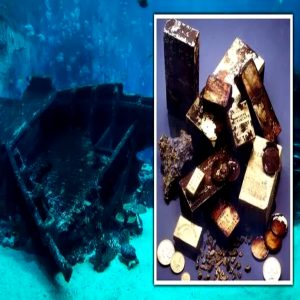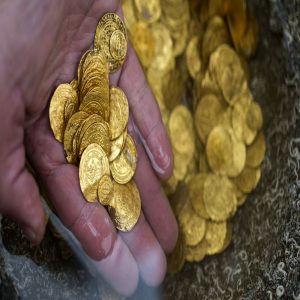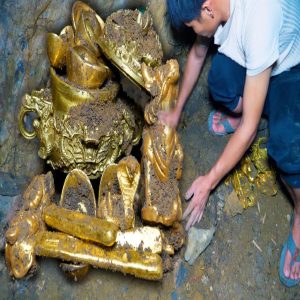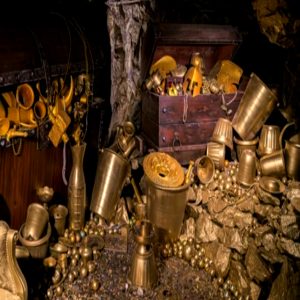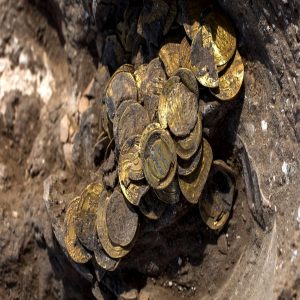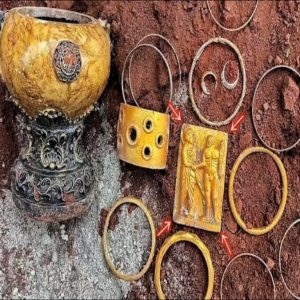To mark the 2015 summer solstice in the northern hemisphere, Wiltshire Museum in England publicly revealed for the first time an early Bronze Age sun disc that was crafted soon after the sarsen stones were put in position at Stonehenge. The rare, 4,400-year-old golden relic was found in a burial mound at Monkton Farleigh, just over 20 miles from Stonehenge.
The sun disc was first unearthed in 1947 during excavations of the burial mound, which also yielded a pottery beaker, flint arrowheads and the remains of an adult male. Wiltshire Museum reported that the landowner kept possession of the precious artifact until 2015, when he decided to hand it over to the Museum. It was then cleaned and prepared for its first ever display in the Museum to mark the year’s mid-summer solstice

“This is one of only 6 finds of sun-discs discovered and is one of the earliest metal objects found in Britain,” Wiltshire Museum reported in their press release. “It was made in about 2,400 BC, soon after the sarsen stones were put up at Stonehenge, and is thought to represent the sun.”
The sun disc, only the size of a small coin, consists of an embossed sheet of gold with an encircled cross in the center. Two holes suggest that the disc may have been sewn onto a piece of clothing or a head-dress.
The sun disc is not the only example of Stonehenge era gold craftsmanship. In 1808, archaeologist William Cunnington discovered what has become known as the crown jewels of the ‘King of Stonehenge’. They were found within a large Bronze Age burial mound just ½ mile from Stonehenge, known today as Bush Barrow. Within the 4,000-year-old barrow, Cunnington found ornate jeweler, a gold lozenge that fastened his cloak, and an intricately decorated dagger.

The golden lozenge found in the Bush Barrow (Wikimedia Commons)
The precision and accuracy displayed by the craftsmanship of the golden lozenge demonstrates both a sophisticated tool kit and a sound knowledge of geometric form, so much so that David Dawson, director of Wiltshire Museum, described the lozenge as “the work of the gods”. The purpose of the golden lozenge remains a mystery, although some believe it was an astronomical instrument.
The golden handle of the dagger found in the barrow also displayed astounding gold-working skill. “The very finest gold work involved the making and positioning of literally tens of thousands of tiny individually-made components, each around a millimeter long and around a fifth of a millimeter wide,” said Dawson. “We estimate that the entire operation – wire manufacture, stud-making, hole-making, resin pasting and stud positioning – would have taken at least 2500 hours to complete,” he added.

Detail of the decoration of the dagger handle, shown next to a sewing needle for scale. The studs were placed in straight lines and the heads overlapped each other like fish scales. Credit: University of Birmingham and David Bukach
The sun disc will now join the remainder of the Bronze Age gold relics from around Stonehenge in Wiltshire Museum.
